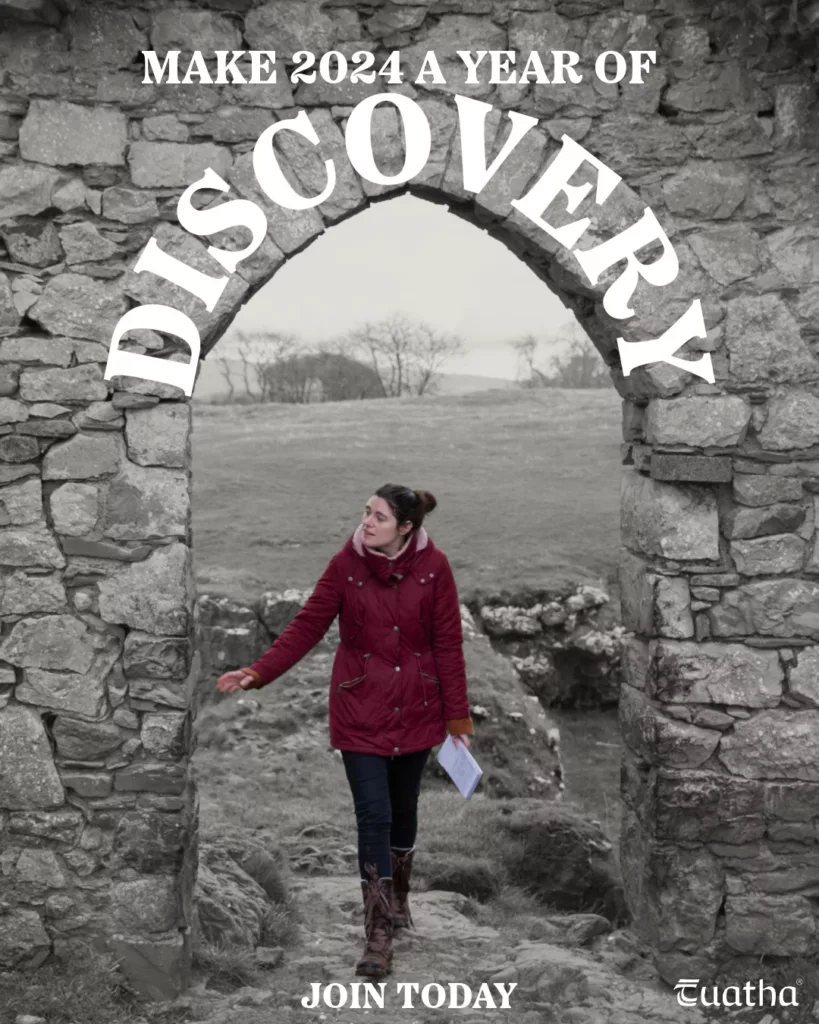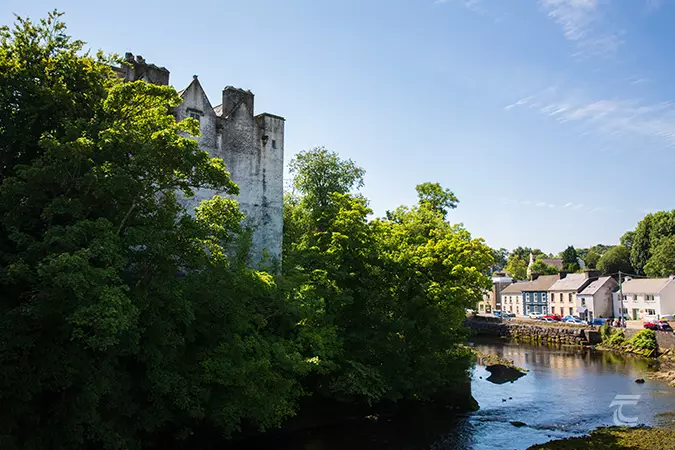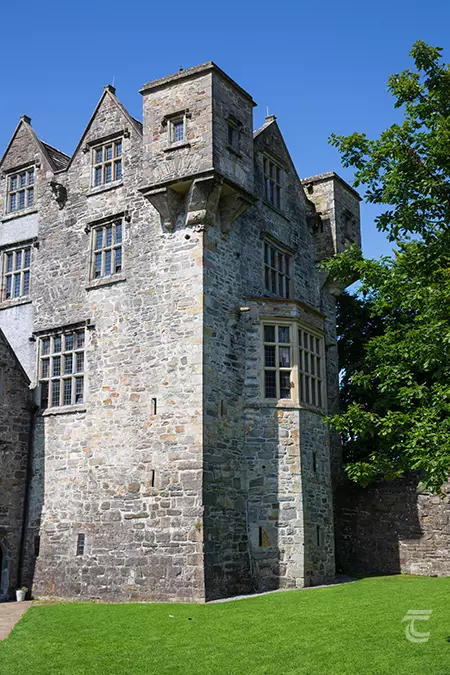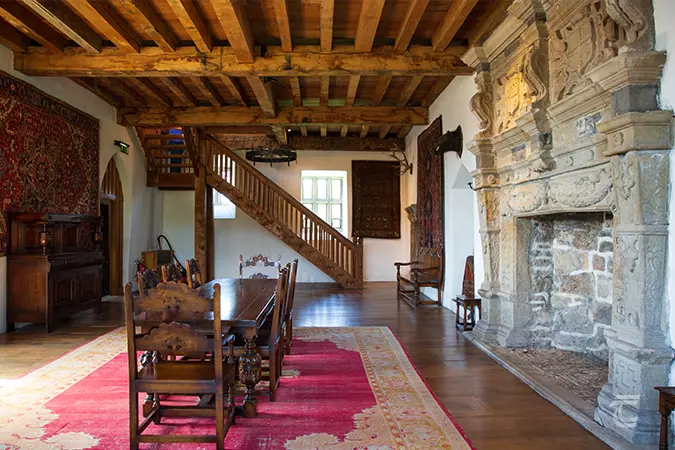Donegal Castle
Donegal Castle was the former stronghold of the O’Donnells of Tirconell and remains an imposing landmark in Donegal Town. The region of Tironnell takes its name from the Irish Tír Chonnaill, in reference to Conall, a son of the legendary High King, Niall of the Nine Hostages. The leading families of the region including the O’Donnells, O’Dohertys and O’Boyles and were collectively known as the Cenel Conaill, the ‘Race of Conall’. In the period between the 13th and 17th century, there was an unbroken line of O’Donnell chieftains and kings stretching for over 400 years. The inauguration ceremony of the O’Donnells took place at Kilmacrenan Abbey and the Rock of Doon.
Unlike the traditional view of monarchy, the chieftain was not always selected based on primogeniture, where the firstborn son inherits. Instead the ruler was selected by the nobles on their fitness to rule. Though occasionally, and perhaps not surprisingly, the more subjective view of who exactly is the most fit, could lead to dispute, infighting and long-held grudges.
The oldest part of the castle is the O’Donnell Tower, thought to have been constructed by Red Hugh O’Donnell I, who died in 1505. The English Lord Deputy Sir Henry Sidney who visited the castle in 1566 recounted that, “It is the greatest I ever saw in Ireland in an Irishman’s hands, and it would appear to be in good keeping; one of the fairest situate in good soil and so nigh a portable water as a boat of ten tonnes could come within twenty yards of it.”
The last O’Donnell resident in the castle was the famous Hugh Roe O’Donnell, ‘Red Hugh II’, who was one of the key leaders of the rebels in the Nine Years War. After defeat at the Battle of Kinsale in 1601, he sailed to Corunna, Spain, where many of the Irish chieftains and their families were seeking exile. He travelled to Valladolid to plead with the Spanish King for assistance to defeat the English in Ireland, only to be fobbed off by King Phillip III who promised help but never acted upon it. Hugh died in 1602 and was buried in Simancas Castle, in Central Spain, and far from his home in Donegal. Some believe that he was poisoned by the Anglo-Irish double-agent James Blake, and with his death, the long line of O’Donnells as chiefs and kings of Tirconnell came to an end.
For practical information about visiting this site Click Here
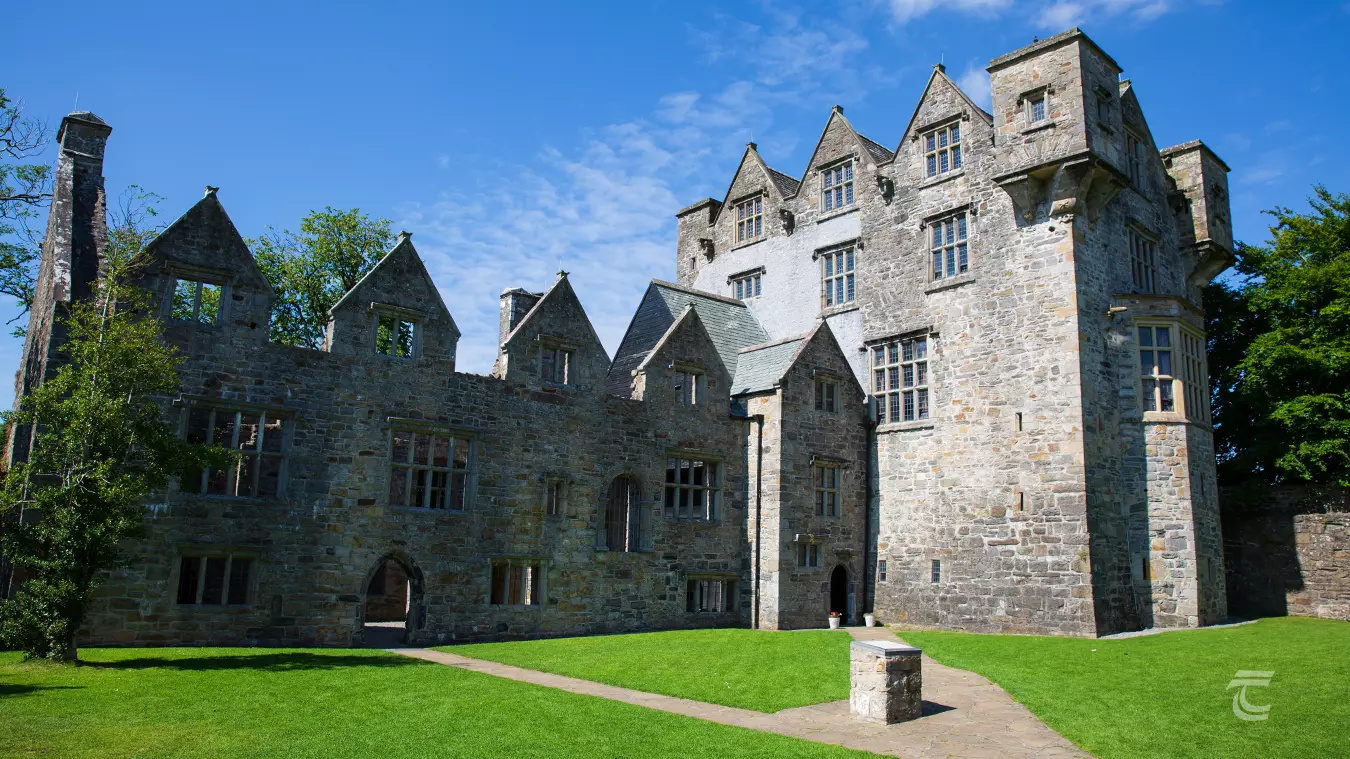
Donegal Castle • Donegal
The Later History of Donegal Castle
The castle became the possession of Sir Basil Brooke in 1616. He carried out large-scale renovations of the castle to make it more fitting of an English gentleman’s home. The beautifully decorated Jacobean-style fireplace on the first floor of the tower and the fine mullioned windows date to this period. As does the Jacobean manor house that adjoins the castle.
After Basil Brooke died in 1633, he was interred at St. Werburgh’s Church in Dublin and was succeeded by Henry, his son. Henry Brooke led a successful defence of Donegal Castle during the Rebellion of 1641, though he did temporarily lose possession of the castle in 1651 to the Marquess of Clanricarde. He quickly regained control with the support of Sir Charles Coote. After the Cromwellian settlement, Henry Brooke was granted extensive lands, including the Colebrooke Estate in County Fermanagh, where his descendants still live today.
By the 18th century, Donegal Castle had been abandoned as a residence and so it began to fall into disrepair and ruin. It came into the possession of the Office of Public Works in 1898 and the O’Donnell Tower has been largely restored. The interior has many interesting period features and an exhibition details the history of the castle and the region.
The ruins of a Franciscan friary can also be seen on the shore of the bay just outside the south of the town. It was founded by the O’Donnells in the 15th century, but little remains of the original friary today. It is noteworthy as the home of the Franciscan friars who produced the Annals of the Four Masters.
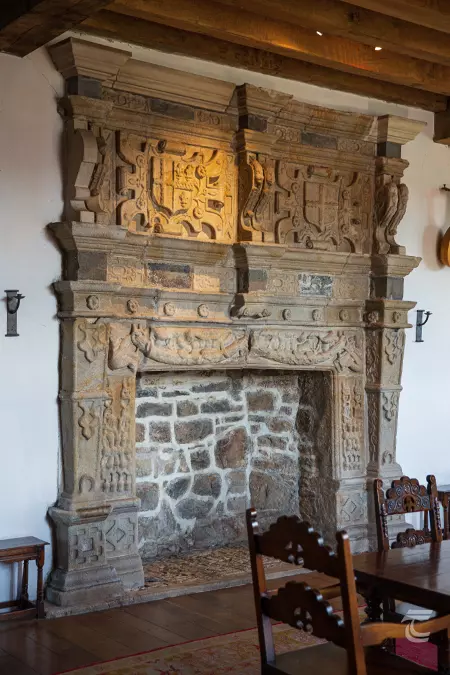
Fireplace in the Great Hall • Donegal
Upper left: Donegal Castle on the banks of the River Eske • Lower left: The Great Hall • Right: Donegal Castle defences
Top: Donegal Castle on the banks of the River Eske • Middle: Donegal Castle defences • Bottom: The Great Hall
Donegal Castle Visitor Information
Donegal Castle offers a glimpse into a stronghold of Gaelic aristocracy and is superb example of later medieval architecture.
